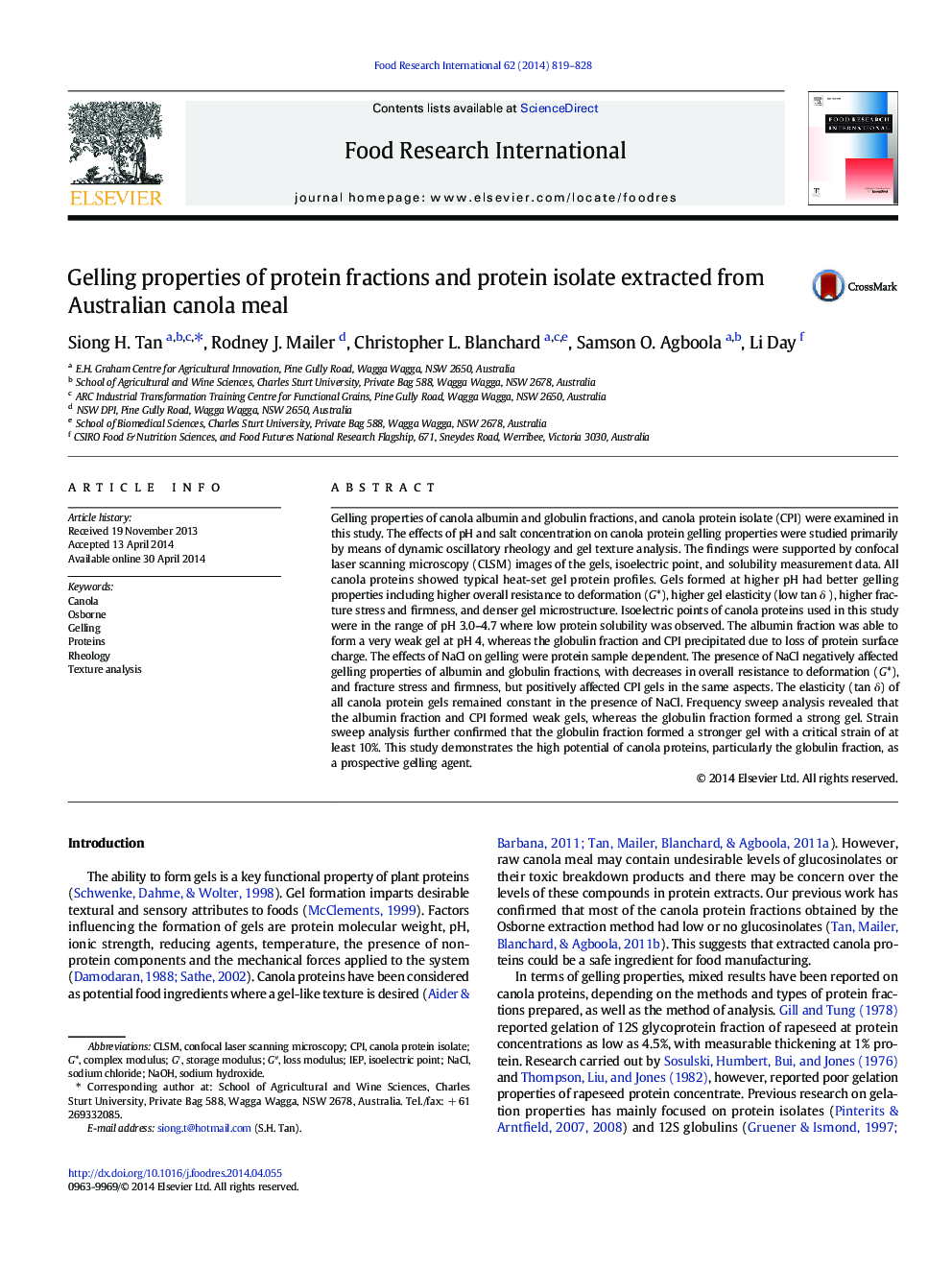| کد مقاله | کد نشریه | سال انتشار | مقاله انگلیسی | نسخه تمام متن |
|---|---|---|---|---|
| 6395954 | 1628482 | 2014 | 10 صفحه PDF | دانلود رایگان |
عنوان انگلیسی مقاله ISI
Gelling properties of protein fractions and protein isolate extracted from Australian canola meal
ترجمه فارسی عنوان
خواص ژلینگ کسر پروتئین و ایزوله پروتئین استخراج شده از کنجاله استرالیا
دانلود مقاله + سفارش ترجمه
دانلود مقاله ISI انگلیسی
رایگان برای ایرانیان
کلمات کلیدی
CLSMNaOHNaClCPIIEPG″ - G "G′ - G 'canola protein isolate - ایزوله پروتئین کانولاTexture analysis - تجزیه و تحلیل بافتGelling - جیلینگRheology - رئولوژیSodium hydroxide, Caustic Soda - سدیم هیدروکسید، کاستیک سودا، سود سوزآورSodium chloride - سدیم کلریدloss modulus - مدول از دست دادنStorage modulus - مدول ذخیره سازیcomplex modulus - مدول پیچیدهconfocal laser scanning microscopy - میکروسکوپهای اسکن لیزری کانفوکالIsoelectric point - نقطه ایزوالکتریکProteins - پروتئین هاCanola - کانولا
موضوعات مرتبط
علوم زیستی و بیوفناوری
علوم کشاورزی و بیولوژیک
دانش تغذیه
چکیده انگلیسی
Gelling properties of canola albumin and globulin fractions, and canola protein isolate (CPI) were examined in this study. The effects of pH and salt concentration on canola protein gelling properties were studied primarily by means of dynamic oscillatory rheology and gel texture analysis. The findings were supported by confocal laser scanning microscopy (CLSM) images of the gels, isoelectric point, and solubility measurement data. All canola proteins showed typical heat-set gel protein profiles. Gels formed at higher pH had better gelling properties including higher overall resistance to deformation (G*), higher gel elasticity (low tan δ ), higher fracture stress and firmness, and denser gel microstructure. Isoelectric points of canola proteins used in this study were in the range of pH 3.0-4.7 where low protein solubility was observed. The albumin fraction was able to form a very weak gel at pH 4, whereas the globulin fraction and CPI precipitated due to loss of protein surface charge. The effects of NaCl on gelling were protein sample dependent. The presence of NaCl negatively affected gelling properties of albumin and globulin fractions, with decreases in overall resistance to deformation (G*), and fracture stress and firmness, but positively affected CPI gels in the same aspects. The elasticity (tan δ) of all canola protein gels remained constant in the presence of NaCl. Frequency sweep analysis revealed that the albumin fraction and CPI formed weak gels, whereas the globulin fraction formed a strong gel. Strain sweep analysis further confirmed that the globulin fraction formed a stronger gel with a critical strain of at least 10%. This study demonstrates the high potential of canola proteins, particularly the globulin fraction, as a prospective gelling agent.
ناشر
Database: Elsevier - ScienceDirect (ساینس دایرکت)
Journal: Food Research International - Volume 62, August 2014, Pages 819-828
Journal: Food Research International - Volume 62, August 2014, Pages 819-828
نویسندگان
Siong H. Tan, Rodney J. Mailer, Christopher L. Blanchard, Samson O. Agboola, Li Day,
